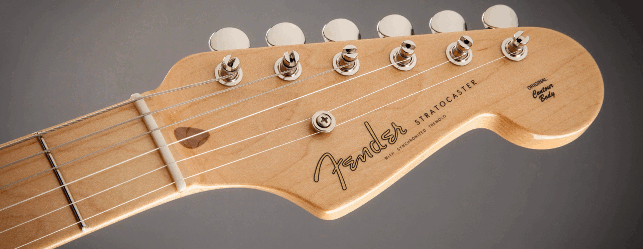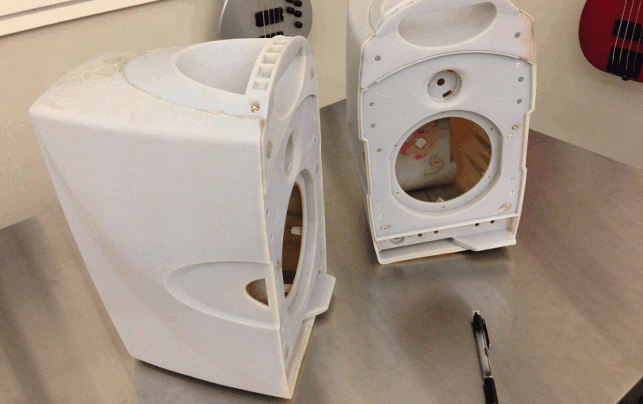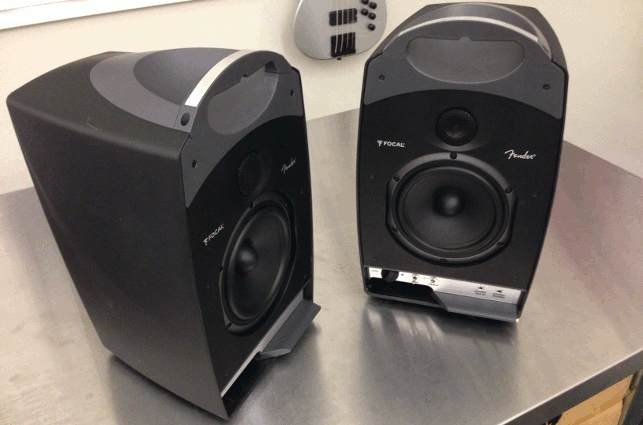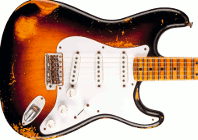Star of millions of albums, posters hanging on bedroom walls, peeling billboards and teenage dreams, Fender’s instruments are music icons.

The R&D woodwork for Fender’s guitars is done using a blend of traditional and digital cutting
Its Stratocaster, Telecaster and Jaguar models have empowered more rock legends than champagne and cocaine combined, and continue to do so well into the modern age. Jimi Hendrix, Bob Dylan, Ritchie Blackmore, Kurt Cobain, George Harrison, Keith Richards, Bruce Springsteen and Eric Clapton have all picked up one of its models whether in the studio or on stage.
Few products have influenced so many people in the way the electric guitar has done, and in the 60 years it has been producing its Stratocaster model Fender has expanded substantially.
With expansion comes design challenges; to meet this Fender has expanded its Research and Development (R&D) facilities to support its heritage guitar families as well as new product lines.
“What’s really evolved over the years is the use of 3D printing plus our design process,” says Fender’s senior modelmaker Shawn Greene from his workshop in the company’s Arizona headquarters.
A 19-year career at Fender has seen Greene traverse all its R&D departments, from graphic and industrial design to finding his domain among the physical model making. From this position he has seen the advancements in all its processes.
“Now, we’re able to really go from sketch all the way up to first production units in a very, very short amount of time.”
Growing volume
Fender’s growth has seen it expand from electric guitars and basses to amps, pedals and, now, high-end studio audio equipment, with the complexity of the product at the heart of the R&D turnover rate.
“Over the years we’ve done very minor refreshes,” says James Gifford , Fender’s VP of design and R&D. “On the flip-side we have projects that we’re doing now that are brand new from scratch.”

The prototype Passport Studio, a portable recording/playback system, was 3D printed
These full-blown design processes involve extensive brainstorming sessions, concepts, user observations and interviews with consumers, repeatedly going back through the conceptualisation process to gain extra refinement.
“These major projects will probably take the better part of a year to a year and a half to complete before they’re actually on the market. So they’re a little more time consuming than a normal refresh.”
A refresh can be on a guitar ‘family’ that has remained untouched for over two decades, adding extra pressure to the design team to keep fans happy.
All of the products begin life as sketched concepts, whether a slight adjustment of a classic guitar or a wholly new product.
“One of our designers here is very adept with Keyshot and SolidWorks, so he actually likes to use that,” says Gifford.
“On the flip side I have another designer that is really good at sketching using the Wacom Cintiq screen, so there’s a little combination of medium before design reviews, before we do full 3D CAD, and the point where Shawn is putting together physical models for us.”
Wood works
As tactile products, Fender’s designs need to be physically prototyped: a digital model is not enough to get a feel for a product, and is unable to relay what sound it can produce.
For this reason Fender has modelshops at all its facilities, spread around the hot and dry southeast states — one at its corporate offices, another, along with its custom guitar shop, at its Corona, California site where all the American products are manufactured.
Then there’s another model shop at Fender’s large manufacturing plant in Ensenada, Mexico.
Utilising a blend of traditional and digital cutting, Greene and his team use the main CNC machine at the Corona facility, sending the 3D files to California before the physical models are shipped overnight back to Arizona.
‘We’ve just got a CNC machine in our model shop too. It’s a pretty small CNC,” hints Greene, “But to tell you the truth, a lot of the woodworking we do: if it’s a cabinet we have table saws and all the woodworking materials we need; if it’s a guitar, a lot of times we’ll do them by hand.

The Objet ABS-like material was used for acoustic as well as form and fit testing
“Still, to this day, here in the model shop some of our guitar techs and luthiers will still do initial carvings with larger tools, and then hand-shape it.
“It’s still old-school, and we like it that way!” Around 10 years ago Fender first adopted 3D printing for small prototyping jobs using a bureau service.
“At the time Fender was primarily wood products and amplifiers, a lot of wood and vinyl, and we did what we did very well with all of that, but as we grew we started to use more plastic parts for different products like foot pedals and drum parts.
“As we acquired other companies and grew, the need for doing really intricate moulds and parts grew as well. “The old design process back then relied on waiting for a quote back from the output house, getting funding signed off for it, then waiting on the part to be shipped — a weeklong process, maybe even more,” says Greene.
After four and-a-half years of working in this way Greene and his team fully realised the benefits of 3D printing and the potential of speeding up the process by bringing it in-house.
The team started off with an Objet Eden, although the limitations of having only one print material saw them update the machine to an Objet Connex350.
“Now we’re able to do over moulding and use the ABS-like material,” justifies Greene. Fender relies on this single machine, but its output as part of the workshop R&D is already changing the way the design process works.
“If it’s a plastic part that’s going to get moulded in production down the road we can do everything we need to do on that Connex machine.”
Star guitar
The single machine clearly offers the team amazing versatility, something that Greene’s enthusiasm for the subject conveys.
“I can give you a hundred different examples of how we use the 3D printer, but for one example is on the guitars,” he exclaims. “Within a week I will print maybe 20 to 30 different pickups.”
A pickup is the transducer in the electric guitar that captures mechanical vibrations, with different variations producing a distinctive sound.
“We’re always trying to design new pickups, make little changes, always working with the sound seeing where we can go.
“We’re able to 3D print the pickups, put the magnets in them, wind them [with copper wire] and pot them [a dip coating] and get them in the guitar within two days.
“To be able to do that means we can try multiple, multiple, multiple different designs very quickly long before we have to spend a dime on tooling, and that is invaluable.”

Finished prototypes could then be assessed by the marketing department without need for any expensive tooling
With 3D printing a firm part of Fender’s design make up, the technology now has an important role to play in the majority of the projects it does.
“If we can go from sketch to first prototype that artists can hold, or marketing can see, without ever spending a dime on tooling or going out of house for any part it saves us thousands of dollars and time.”
For general full production run models Fender still relies on standard tooling.
However, with its close affinity to some of music’s greatest living artists, 3D printed customisation is also being applied to the finished product.
“For some of our artists models, or something that’s going to be a one-off, we do what’s called FSRs (Factory Short Runs) — if an artist or band want its logo on each one of the knobs, we can do that.
“If they want a custom bezel that has their name on it, or a custom inlay that’s very intricate, we can use 3D printing to do that.”
Fender has expanded its product range over the years and now produces a wide range of pro-audio and studio equipment. These complex products, packed full of electronic components are a departure from the ‘simple’ design of its guitars.
“Passport Studio is a good example of something that was brand new for us,” says Gifford of their latest portable recording studio. “That product is a different animal to a guitar.
“You’re talking a lot of plastics; thermal issues when you have such a small enclosure and electronics in the speaker; how the whole thing goes together as a portable system. So the mechanics had to be really thought out.
“Whereas a lot of our guitars may be based on a set design we wouldn’t change — as far as Stratocaster and Telecaster bodies — a brand new product means we have more free rein over what we can do,” admits the VP of design.
The freedom in the design stages of the project continues through to the prototyping workshop, where Greene’s team is able to push the technology available to them.
“One of the cool things that happened is that we were able to go from beginning sketch to first prototype, not just for looks, fit and function, but using the Objet ABS-like material to do sound testing,” explains Greene, noting that the 3D printed prototypes nearly matched the finished product for sound quality.
“Within a year we were ready to go, and that’s huge on a product like that, which takes a lot of development.”
New notes
As the product range continues to grow Fender is planning on using more technology to support the increasingly complex design process.
“We’re really excited. Every three years we look at reinvesting in new equipment, in things that will make us faster and better,” says Greene.
The first thing to catch his eye is the new Stratasys Objet500 Connex3, a multi-material 3D printer that is able to print colour versions of its block, flexible and translucent materials.
“That speeds things up with less painting and after work we have to do to show marketing,” explains Greene, adding that the increased number of print heads the Connex3 gives them would also give them new build options.
“What I’m really excited about is the extra bay and head — today it takes two bays to make the ABS-like material, having the extra bay means being able to overmould on top of that.”
From the same machine this means the team would be able to add various details to the models in a single build, while also giving the ability for producing colour tinted lenses for lighting.
“At this point, a lot of the parts that we use on our amplifiers and guitars are iconic things that we wouldn’t get rid of or try to redesign too fast. Fender is still Fender and we’re not going to change that!
“But we are excited about maybe getting the ability, as the machines get smaller, cost effective and the speed come up a bit, and maybe we can do more custom parts.”
Fender for all
Fender is committed to expanding its use of new technologies, one of the key benefits being its ability to provide customisation.
“There’s all different values and prices of a guitar, and there is a market out there for the people that want something really nicely made, but that there’s only one or two hundred out there,” states Greene.
However for some, finding that perfect Strat’ or Tele’ will still come from more than personalised trinkets.
As Jeff Beck, the iconic Yardbirds guitarist, once said: “Fender make so many permutations of the same thing, but some just fit like you were born with them.”
Fender shapes its future through 3D design technology
Default






